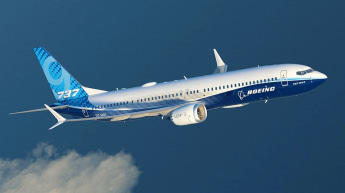 The F-35 has suffered its fair share of criticisms, but Australia’s growing fleet of fifth-generation super jets appears to have shrugged this off to integrate with the rest of the RAAF. Here, Stephen Kuper speaks exclusively to Air Commodore Tim Alsop about training exercise Lightning Storm, which put the aircraft through its paces alongside the E-7A Wedgetail, F/A-18A Hornets and KC-30A Tankers.
The F-35 has suffered its fair share of criticisms, but Australia’s growing fleet of fifth-generation super jets appears to have shrugged this off to integrate with the rest of the RAAF. Here, Stephen Kuper speaks exclusively to Air Commodore Tim Alsop about training exercise Lightning Storm, which put the aircraft through its paces alongside the E-7A Wedgetail, F/A-18A Hornets and KC-30A Tankers.
The F-35 is designed to be the most technologically advanced air combat capability ever fielded by the RAAF, combining low observability, unprecedented levels of sensor fusion and next-generation weapons. But, in truth, it hasn’t been without its teething problems.
While much of these have been borne in large part by the US, by far the largest customer of the platform, the public perception has nevertheless landed in Australia as well. However, Exercise Lightning Storm has revealed the true potential of the wonder jet, particularly when combined with the RAAF’s other leading-edge capabilities.
Exercise Lightning Storm provided the RAAF with the opportunity to develop, study and train at a truly national scale, despite the limitations imposed by COVID-19, and was specifically designed to put the F-35 through its paces as the fleet in Australia continues to grow.
Commander Air Combat Group (ACG), Air Commodore Tim Alsop, shed some light on the training program and the performance of the F-35, as the RAAF put its new wonder jet through its paces.
“To say that the F-35 performed wonderfully is an understatement, it truly is a generational and transformational capability for the Royal Australian Air Force. Throughout the exercise, JSF really came into its own,” AIRCDRE Alsop said.
Exercise Lightning Storm saw a spectrum of RAAF assets combined around the nation, ranging from the E-7A Wedgetail Airborne Early Warning & Control (AEWC), the F/A-18A Hornets, F/A-18E/F Super Hornets, KC-30A Tankers and Hawk Lead-in fighters all combine with the F-35.
The exercise also provided an opportunity for the Air Force ground elements, particularly support elements from No 3 Squadron, combined with the No 3 Control and Reporting Unit (3CRU) utilising their TPS-77 radar capability to provide an essential surveillance picture which was transmitted by satellite to the unit’s control and reporting centre (CRC) at RAAF Base Williamtown.
AIRCDRE Alsop explained, “The exercise was designed from the ground up to validate the deployability and interoperability of the F-35 – this emphasised ‘deploying’ the F-35 and its support infrastructure ‘away from barracks’, which we were able to do in an ‘expeditionary’ manner despite not actually leaving the base.”
Originally planning to travel to RAAF Base Tindal to conduct Exercise Lightning Storm, No 3 Squadron instead put its personnel and systems to the test by conducting a simulated deployment in their own hangars at RAAF Base Williamtown.
“The nationwide effort required to support the exercise is testament to the air combat group, paired with aerial refuelling, E-7 Wedgetail AEW&C and the people around the country who worked to provide proof of concept,” AIRCDRE Alsop added.
Working with air and land-based assets enabled Air Combat Group to begin the integration of the F-35 as part of the broader fifth-generation air force, something that AIRCDRE Alsop said was a pivotal part of the exercise.
“It was important at the moment internally, it enabled us to work with the ground-based radars and the integrated battle management systems which enabled us to really test the capability delivered by the platform,” AIRCDRE Alsop explained.
“We’ve taken the lessons and best parts of Super Hornet, as a half generational stepping point to prepare for the F-35, doing so enabled us to not only prepare for JSF, but also develop a uniquely Australian capability.
“Bringing in the Hawks enabled us to bring in new pilots who in the near future will be introduced into the platforms they were witnessing and flying against, which highlights the importance of the person in the integration process and their role in the fifth-generation force.”
In addition to 3CRU’s assets, Exercise Lightning Storm included RAAF No. 114 Mobile Control and Reporting Unit’s deployable Mobile Control and Reporting Centre (MCRC) operating out of Oakey in Queensland, the E-7A Wedgetail, KC-30A multi-role tanker transports, F-35A Lightning and other fighter aircraft from Williamtown and Amberley airbases.
AIRCDRE Alsop added, “The whole exercise really enabled us to bring together the entire spectrum of capabilities delivered by F-35 and the rest of the RAAF’s inventory, the extra day really expanded this and showed off what this impressive piece of kit is capable of.”
For the RAAF, the F-35A’s combination of full-spectrum low-observable stealth coatings and materials, advanced radar-dispersing shaping, network-centric sensor and communications suites – combined with a lethal strike capability – means the aircraft will be the ultimate force-multiplying, air-combat platform.
Over the coming years, Australia will purchase 72 of the advanced fifth-generation fighter aircraft as part of the $17 billion AIR 6000 Phase 2A/B program – which is aimed at replacing the ageing F/A-18A/B Classic Hornets that have been in service with the RAAF since 1985.
*Editor’s note: All parts of the exercise were conducted within the strictest COVID-19 safety guidelines.
















SeeSure
says:I am wondering where the description of the F-35s as “super jets” come from?
Colin Campbell
says:Or even of the over use of the word, “wonder” to describe the jet!
Phred
says:I hope our enemy like to confine their attacks to inside hangers